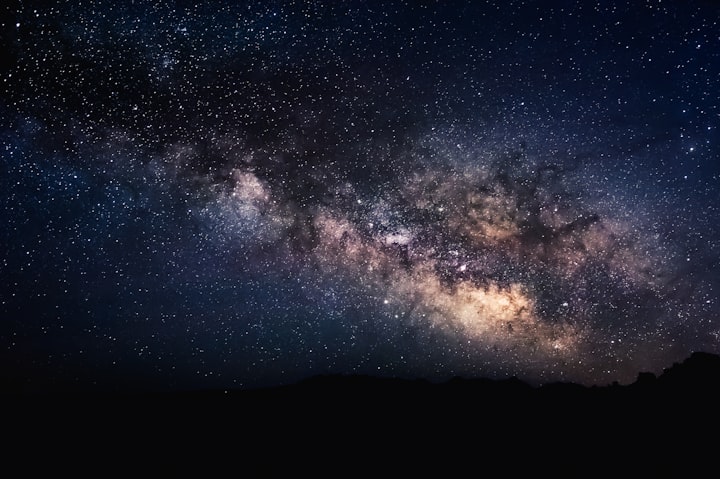Alternative energy is the key to the survival of a human future and the existence of many species on Earth. The question, in my opinion, is not whether to switch to fossil fuels or not. The question of focus in this paper is the effects of alternative energy options on our economy and environment. There are many types of alternative energy out there and methods are being created left and right through technological advancements. Fossil Fuels are the most commonly used form of energy in the U.S today.
We began using Fossil Fuels as a cheap and abundant energy source; the founder of the industrial revolution that only became more embedded into our culture, economy and environmental footprint since the invention of the automobile. Fossil fuels include Coal, Oil and Natural Gas which have devastating effects on the environment globally and as resources become scarce, negatively affect the economy as well. As of this year,2020, it is estimated that our Oil supply will be depleted in nearly 50 years.
People on a global scale have begun to consider alternative forms of energy that better the health of the environment and ourselves without compromising the economy. Some of the most popular forms of alternative energy are Wind, Hydro Electric, Solar Energy and a form of modern technology called Fuel Cells.
According to EIA data of energy use in 2017, renewable energy sources are used at a mere 11% in the U.S. Despite their growing popularity the implementation of these sources are low due to varying reasons relating to the energy type itself and the economic cost or gain of its production.
Solar Energy is often misconceptualized as a perfect energy source and there are many positives to produce this reputation. Solar is easy to maintain and aside from general cleaning and a viable option for many places on Earth, as its fuel source is sunlight, it is renewable and has little risks to human or environmental health. The Solar Energy market is also growing and advancements to the technology continue to make Solar more and more reliable. In 2015, Solar Energy companies produced 35,000 jobs; compared to the 17,000 jobs created by Oil and Gas companies the same year, Solar Energy has proven to boost the economy by providing such jobs.
However, Solar Energy is not without flaws. Solar Energy has been associated with small amounts of pollution during installation and transportation, additionally Solar Energy is dependent on the weather and on the amount of sunlight available. For example, In some places in Alaska it can stay day for weeks which is great a great condition for Solar Energy but they also can have weeks of night where Solar Energy Technology would be completely devoid of use. A less direct example is the effect a cloudy day could have on Solar Energy production in the U.S, stability is a concern as well as storage of excess energy. The largest opposition to Solar Energy use is cost. Although it is cheap to maintain, the start up fees are no small bill and what storage is available is also very expensive on the market right now. The cost is decreasing at a high rate of 62% as Solar Energy becomes more popular and as technological growth continues. Prices have declined steadily for Solar Systems from $50,000 in 2012 to $20,000 in 2018.
We can see the cost per watt decrease throughout time and this decrease is expected to continue to steadily become more affordable. This decrease in price has lead to an increase in Solar Energy System installations and use.
Wind Power is another popular form of renewable energy in the U.S. This field has grown rapidly; Wind Turbine Technician is one of the fastest growing careers in the U.S and with good reason, Wind Energy created 102,500 jobs in 2016. Wind Turbines can be used in rural areas, which provides a boost to the local economy in those areas as well as a n independent source of power. Areas where high winds are common is the ideal place for Wind Energy to be used. In a study using 41 participating states in 2019, it was found that the highest wind capacity was 24.9GW in Texas. That being said, Texas would likely produce larger amounts of electricity from utilizing Wind Energy than states with low capacity. Wind Energy is also environmentally safer than Fossil Fuels, producing no greenhouse gas emissions. It also is safer for human use as it has a lower likelihood of combustion, Unlike Fossil Fuels. Due to this, 27 coal plants were closed in the U.S in favor of Wind Energy in 2017.
This doesn’t make Wind Energy perfect though as they still do have an impact on bird populations, killing up to 328,000 birds a year from the spinning blades. Construction can take years of planning, testing and installation, making it an unfavorable practice residentially. The power is directly correlated to the weather, Texas may have the highest wind capacity but if they have a shortage of wind, their production may fall below economically valuable limits, demonstrating the risk of fluctuation in Wind Power. Wind Turbines are also regarded as visual and noise pollution, meaning they are loud and disturbing to locals causing many people to move away from areas where Wind Power is used in large quantities.
Hydroelectricity is safe,renewable and does not produce pollutants while producing power. Additionally, the price of hydroelectricity is stable and won’t fluctuate with the economy like gas or oil does. It is a low maintenance option and often creates recreational opportunities by being open to the public and its energy is delivered right to the grid, meaning that it is an efficient backup source of power during power outages. Hydroelectricity offers the self sustainability of states to produce their own power. This sounds perfect but there are big costs, figuratively and literally.
It is extremely expensive to build and requires the abundance of reservoirs-which are running low as it is. In addition to difficulty finding suitable reservoirs, drought and other water related changes will affect power production. Environmentally, the cost is paid in habitat loss during construction and dramatic changes to aquatic life within the reservoir.
Changing the natural course of the water has harmed fishing productivity as well due to the decrease of fish after the changes made to their habitat. So what else can we turn too if none of these are the perfect fit to our environmental and economic needs?
Many suggest technology, or more specific, chemistry. Fuel Cells are a unique technological advancement where oxygen and hydrogen enter the fuel cell, produce heat and power, then release water vapor as its byproduct. Fuel Cells were first invented in 1889 by Ludwig Mond and Charles Langer, though it began with coal based fuel, it later advanced to the Hydrogen/oxygen fuel source we use modernly.
Since its invention Fuel Cells have aided in government and more recently domestic pursuits. In the 1960s Fuel Cells were implemented to help fuel the space capsules Apollo and Gemini for NASAs space exploration goals and are currently used in NASA to provide electricity for space shuttles and the same fuel cell in the shuttle provides drinking water for the crew. Fuel Cells made their way into vehicle prototypes in 1997 and now power buses and cars. Fuel Cells have been around a mere 150 years but are environmentally safe and a growing market.
They produce no harmful byproducts, harmful chemicals, water pollution, air pollution or contain heavy metals and have little risk of combustion compared to gasoline. They also come into contact with less harmful chemicals then gasoline- 150 less chemicals including Toluene, Benzene and Xylene. Fuel Cells produce instant electricity and have no need to be recharged. They are portable sources of power as they vary in size and can be used for transportation, residential use or on the go. This makes Fuel Cells extremely convenient and its consistency makes it reliable. They are flexible, compact, produce little noise of visual pollution, are low maintenance, and reduce economic dependency by producing reliable energy for some countries. There are a few setbacks to this technology, much of which can be attributed to its relatively new development and lack of public awareness. Most notably, they are very expensive! Manufacturers are currently investing millions of dollars into creating fuel cell mass manufacturing sites and investing in various markets with similar products to help stimulate their development and implication in society. The price to make Fuels Cells is one of the biggest disadvantages to the energy source though the prices are expected to drop as these efforts continue. Fuel Cells also have risks related to flammability and causing freeze burns when dealing with liquid hydrogen; they are extremely sensitive to higher temperatures which can cause numerous problems related to leaked hydrogen (which would negatively affect the Ozone layer). Due to these concerns Fuel Cells can only power cars, whose engines are on average 190 degrees Fahrenheit to 220 degrees Fahrenheit, for a short distance. They are currently being used in some local transportation buses, which travel shorter distances in the cities of their use.
Fuel Cells are an amazing invention that needs more time, research, and funds (as with any of the alternative energy methods discussed in this paper). Fuel Cells are not well known to the general public and therefore lack support and general knowledge of them as an option for our future. Although these can not be put in place now, It would be beneficial to consider their future contribution while also putting other alternative energy sources to use.
Fuel Cells are also not a foolproof solution, so is there really just one way to create our energy supply? I’d wager not. No one form of alternative energy is perfect, contrary to popular belief, there are drawbacks to every form of energy. If Solar, Wind, Hydroelectricity and Fuel Cells aren’t enough on their own, the natural solution is to combine them, invest in them, learn and develop what we can. As an economy and society, we must prepare to change one step at a time, starting with what are available positive changes such as Hydroelectricity and Wind Power as they are applicable. We need to begin change, education and research to find a better balance of how we treat ourselves and our planet with the energy sources we have and are developing.
We need people to be informed and passionate because any large scale attempt to change our energy usage will take trial and error, effort, and patience but I have hope that we can find combinations to better our world. It is our job as a society to decide where balance lies between us and the resources we use. So the final question is not one we answer for the interest of our own immediate satisfaction, it must be answered in the interest of our future and the world that future will reside within and so I ask different questions: Our future, can we do better to make the future one worth looking forward to? Are we willing to change for the 40,037,550( and counting) children born this year that will have to live in what we create? Will those children grow up to have to buy clean air in a plastic bottle? Will they be able to count the species of fish on their fingers or learn about the rainforest in history books? What legacy do we leave behind and is it good enough? Those are the questions we need to ask ourselves, and after we have answered them with new goals, we will have plenty of work to do and a chance to better our world will reflect and shine off every solar panel like a promise to the future.
Citation
(n.d.). Retrieved from https://www.usgs.gov/special-topic/water-science-school/science/hydroelectric-power-water-use?qt-science_center_objects=0#qt-science_center_objects
(n.d.). Retrieved from https://www.theworldcounts.com/challenges/toxic-exposures/polluted-bodies/how-many-babies-are-born-a-day
Amadeo, K. (2019, October 16). Pros and Cons of U.S. Wind Energy. Retrieved from https://www.thebalance.com/u-s-wind-energy-pros-cons-and-outlook-4690745
Barriers to Renewable Energy Technologies. (2017, December 20). Retrieved from https://ucsusa.org/resources/barriers-renewable-energy-technologies
Benefits of Hydropower. (n.d.). Retrieved from https://www.energy.gov/eere/water/benefits-hydropower
Fossil Fuels Pros and Cons. (n.d.). Retrieved from https://energyinformative.org/fossil-fuels-pros-and-cons/
Green Garage. (2019, February 19). 26 Significant Pros and Cons of Hydrogen Fuel Cells. Retrieved from https://greengarageblog.org/26-significant-pros-and-cons-of-hydrogen-fuel-cells
How the pros and cons of solar power have changed in 2020. (2020, March 30). Retrieved from https://www.solarreviews.com/blog/pros-and-cons-of-solar-energy
Hydro-electricity vs. Fossil Fuels. (2016, January 12). Retrieved from https://prezi.com/hof0pmrgawqb/hydro-electricity-vs-fossil-fuels/
Hydroelectric Energy Pros and Cons. (n.d.). Retrieved from https://energyinformative.org/hydroelectric-energy-pros-and-cons/
Jensen, A. (2018, September 18). Examining the Pros and Cons of Hydropower. Retrieved from https://www.manufacturing.net/chemical-processing/article/13245967/examining-the-pros-and-cons-of-hydropower
Lg. (n.d.). 12 Hydrogen Fuel Cells Pros and Cons. Retrieved from https://vittana.org/12-hydrogen-fuel-cells-pros-and-cons
Lpeck. (2018, April 4). How Solar Energy Impacts the Economy. Retrieved from https://www.solarenergyworld.com/how-solar-impacts-economy/
Pros and Cons of Solar Energy. (n.d.). Retrieved from https://www.greenmatch.co.uk/blog/2014/08/5-advantages-and-5-disadvantages-of-solar-energy
Sunrun. (2020, March 27). Cost of Solar: Solar Panel Cost: Cost of Solar Installation. Retrieved from https://www.sunrun.com/solar-lease/cost-of-solar
U.S. Energy Information Administration - EIA - Independent Statistics and Analysis. (2019, September 23). Retrieved from https://www.eia.gov/energyexplained/solar/solar-energy-and-the-environment.php
Wind Energy Pros and Cons. (n.d.). Retrieved from https://energyinformative.org/wind-energy-pros-and-cons/
Wind energy pros and cons. (2019, September 27). Retrieved from https://www.energysage.com/about-clean-energy/wind/pros-cons-wind-energy/
About the Creator
Sasha Boileau
Hi! I'm currently studying to be a secondary education English Teacher. I have published books ranging from young adult fiction to childrens books. I joined Vocal for a place to share an unedited array of peices, I hope you enjoy them!







Comments
There are no comments for this story
Be the first to respond and start the conversation.